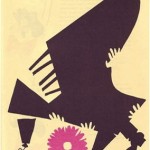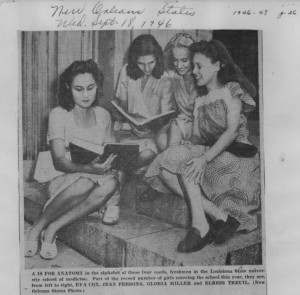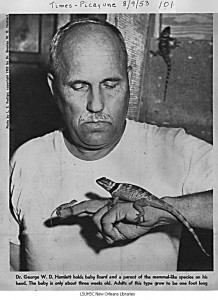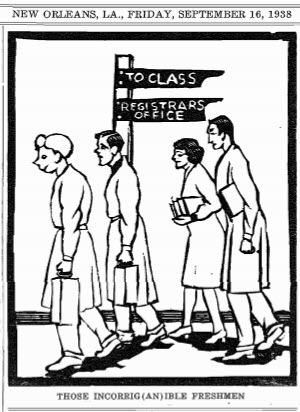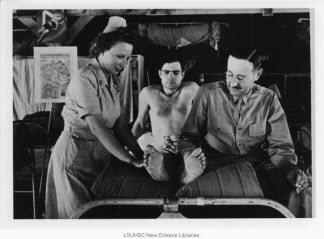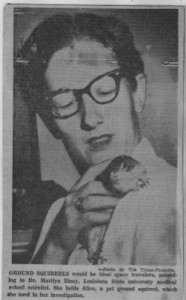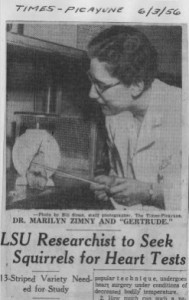This Month in History: Pay No Attention to the Doctor Behind the Iron Curtain
A young, bespectacled version of the Wizard of Oz, Dr. Frank N. Low, lived up to the great and powerful legacy as a member of LSUMCÔÇÖs anatomy faculty, venturing behind the Iron Curtain in 1958. His travels came at a time of international tension, but in the name of science, Dr. LowÔÇÖs survey of electron microscope usage in laboratories across Europe proved invaluable in transcending the iron divide and promoting cross-cultural cooperation.
Remarking on the ÔÇ£exoticÔÇØ subway of Moscow, the ÔÇ£finely developedÔÇØ Russian sense of humor, and the popularity of the play, ÔÇ£Klop” the Bedbug, in his interview with the Times-Picayune, Dr. Low appears to have enjoyed his surroundings overseas. He even brought home an object known as the ÔÇ£Tartar MenaceÔÇØ that would turn out not only to be lucky for Low, but also for his research assistant, a previous ÔÇ£Glimpse of the PastÔÇØ honoree, Dr. Marilyn Zimny, who upon receipt of the figurine received news that she had been awarded a research grant for $28,000. The ÔÇ£Tartar MenaceÔÇØ appears to refer either to a group of indigenous Mongol peoples called the Tatars or Tartars, or the Greek myth of Tartarus, a section of the underworld. Despite its violent etymology, the figurine kept Dr. Low safe from even a stubbed toe on his journey.
And lucky we are that it did, for Dr. Frank N. LowÔÇÖs contributions to the scientific world were momentous. As of a 1953 article, ÔÇ£Dr. LowÔÇÖs study provide[d] proof of the existence of a complete covering of the tiny blood vessels in the lung. 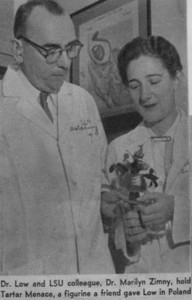 The presence of this covering, medically known as a pulmonary epithelium has long been in doubt. The significance of [his] discovery is that it is an explanation of how air is excluded from the lung tissue, a destructive process. This is why lung surgery is so cautiously practiced.ÔÇØ
The presence of this covering, medically known as a pulmonary epithelium has long been in doubt. The significance of [his] discovery is that it is an explanation of how air is excluded from the lung tissue, a destructive process. This is why lung surgery is so cautiously practiced.ÔÇØ
His triumphs also include authoring a renowned text, Electron Microscope: Atlas of Normal and Leukemic Human Blood, acquiring an electron microscope for LSUMC, and pioneering scanning electron microscopy (SEM) and freeze-etch/freeze-fracture technology. His impressive career culminated in his later life with the establishment of the Annual Dr. Frank N. Low Research Day at the University of North Dakota. He returned to LSU at the end of his career to work under Dr. Zimny in the anatomy department until his death in 1998. This memorial article shows how truly respected and loved he was. Now, if only we could find his ÔÇ£Tartar Menace!ÔÇØ
Glimpse of the Past is an ongoing project to promote the Louisiana Digital Library effort. This Month in History will present for your reading pleasure a closer look into a newspaper clipping of note from our Digital Collections and articles relating to the LSU Medical School.

 myLSUHSC
myLSUHSC